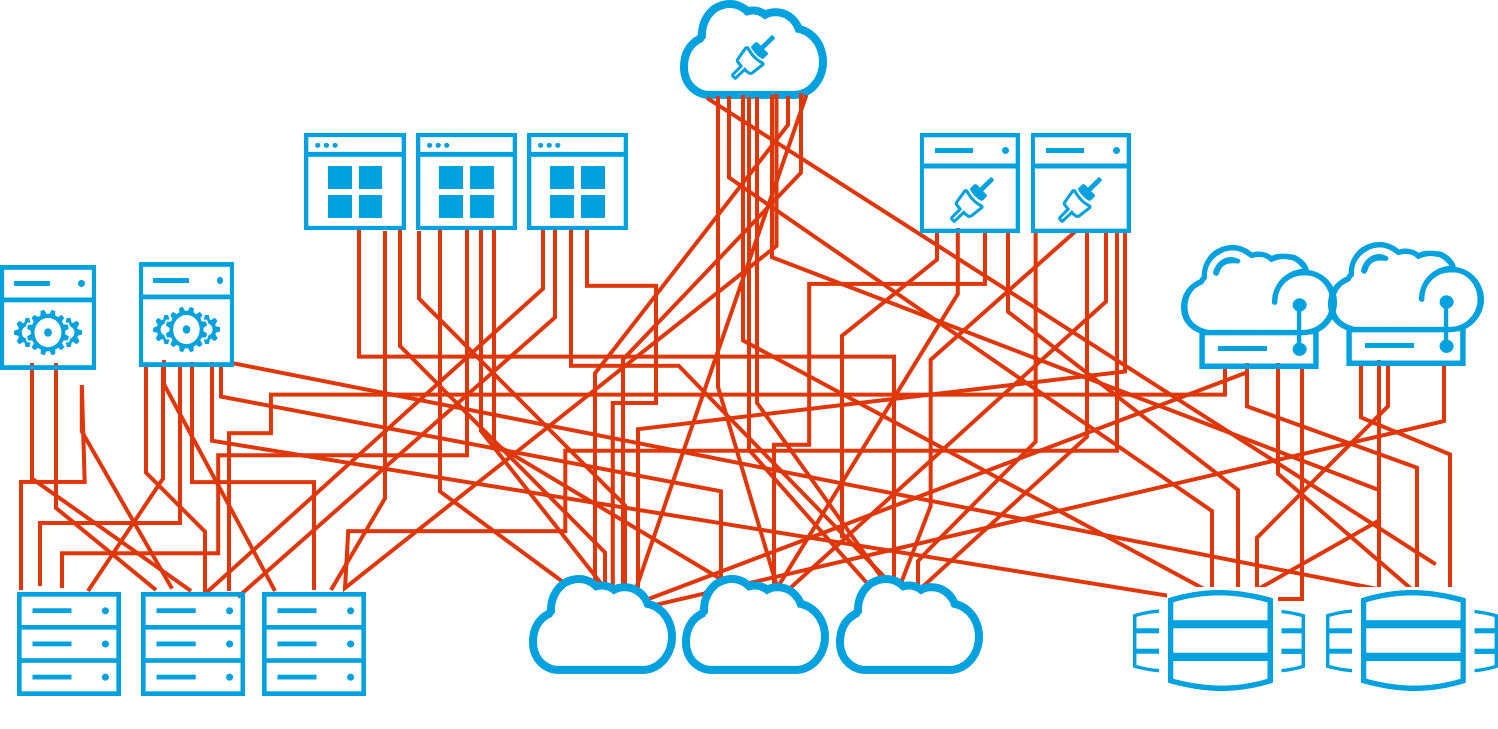Using APIs to overcome integration challenges
Companies embarking on digital transformation initiatives are facing obstacles that are slowing down their efforts for innovation. One pressing challenge is integrating new applications into their existing IT infrastructure. In fact, 89% of ITDMs believe that integration challenges are slowing or hindering digital transformation in their organization, according to the Connectivity Benchmark Report 2018.
However, it is important for companies to overcome integration challenges, as integration is a critical component of an organization’s ability to transform. Here’s why.
The number of applications used by companies today is massive. Our report reveals that the average organization uses more than 1,000 individual applications across their business. Traditionally, companies would connect these applications together via point-to-point integration; essentially custom coding each connection through one-to-one relationships.

A point-to-point integration approach might work for a company with only a handful of applications. But imagine an organization with an ecosystem of more than 1,000 applications. In this case, point-to-point integration would be a nightmare––taking up time and resources as well as stalling deployments across cloud and on-premise. In the Connectivity Benchmark Report, 81% of respondents said point-to-point integration had created some of the biggest IT headaches they had seen. So, while there are specific instances for point-to-point integration, relying on in such a scenario much can hamper productivity.
The benefits of overcoming integration challenges
Currently, IT departments spend nearly two-thirds (63%) of their time ‘running the business’ and resolving integration problems, rather than focusing on innovation and development.
However, when companies integrate their applications in an agile way, they can dedicate more time and resources to innovation. But this isn’t the reality in most companies. In fact, the Connectivity Benchmark Report found that only 29% of a company’s 1,000+ applications are actually connected and talking to each other.
Connecting a greater percentage of these applications has the potential to create a more efficient IT model, allowing businesses to focus more effort on innovation, reduce costs, deliver on business needs and innovation faster and, in turn, remain competitive in the market.
How development siloes exacerbate integration challenges
When it comes to building new applications and services, development teams tend to work in isolation. However, building every new application from the ground up is an expensive and time-consuming pursuit, which often results in integration challenges. This is because teams often end up integrating the same applications over and over again, but for different projects.
The lack of reusability and self-service can hurt a company. Just one third of organizations’ internal IT software assets and components are actually available for developers to reuse. And of those that are, more than 80% of organizations in our Connectivity Benchmark Report 2018 said they don’t always reuse assets when developing new products and services.
How APIs can address integration challenges
In order to innovate faster, developers need access to reusable components such as APIs, templates, etc. that allow them to discover, connect and reuse software assets. APIs, in particular, act like messengers running back and forth between applications, databases and devices––making it easy for companies to unlock data within existing systems and connect that data to other relevant systems.
Beyond addressing integration challenges, APIs provide other benefits––from increased revenue and innovation to improved productivity and efficiency. The Connectivity Benchmark Report revealed that more than half of organizations that own APIs have been able to leverage them to increase productivity; while nearly half have increased innovation, employee engagement and collaboration. These organizations are also successfully leveraging APIs to increase IT self-service and decrease operational costs.
Further, companies can monetize APIs for their benefit as well. On average, ITDMs report that a quarter of their organization’s revenue is now generated from APIs and API-related implementations. In fact, 35% of respondents stated that more than a quarter of their organization’s revenue came from APIs.
Learn more
Addressing integration challenges is no longer a question of “if” but “when.” Do you agree that integration has created some of the biggest IT headaches your organization has ever seen? Then learn how you can use an API-driven approach to integration to solve your integration challenges.



